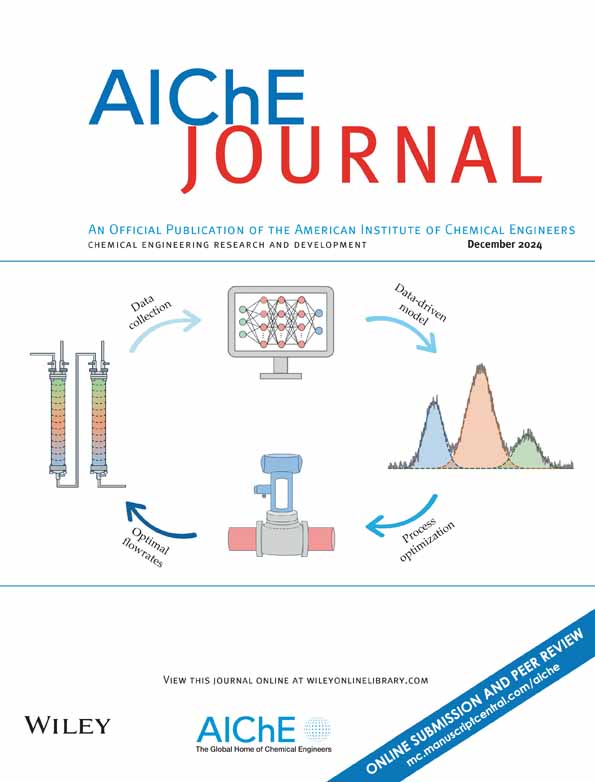Integrated mechanochemistry and filtrate recycling for sustainable production of phosphorylated cellulose nanofibers
IF 3.5
3区 工程技术
Q2 ENGINEERING, CHEMICAL
引用次数: 0
Abstract
The commercial application of phosphorylated cellulose nanofibrils (PCNFs) is restricted by the high environmental burdens and production costs. In this study, we developed an integrated process incorporating solvent-free phosphorylation and recycled filtrate-based phosphorylation for sustainable production of PCNFs. The phosphorylation process consisting of solvent-free ball milling and heat curing was optimized, and the obtained PCNFs showed high charge content (3.78 mmol/g) and ultrafine diameter (~2.2 nm). The washing filtrates were recycled as the aqueous solutions used in heat soaking-based phosphorylation, which could be regarded as the substitute of pure urea and phosphates. Moreover, this integrated phosphorylation process exhibited enhanced environmental friendliness with an average reduction ratio of 14.7% across all impact categories, and the production cost decreased by 31.7% compared with the traditional production route, as the life cycle assessment and techno-economic analysis results revealed. This integrated process offers valuable guidance for the sustainable industrial-scale production and efficient commercialization of PCNFs.综合机械化学和滤液回收可持续生产磷酸化纤维素纳米纤维
磷酸化纤维素纳米原纤维(PCNFs)的商业应用受到高环境负担和生产成本的限制。在这项研究中,我们开发了一种整合无溶剂磷酸化和循环滤液磷酸化的综合工艺,以实现PCNFs的可持续生产。优化了无溶剂球磨和热固化的磷酸化工艺,得到的PCNFs电荷含量高(3.78 mmol/g),直径超细(~2.2 nm)。洗涤滤液回收后作为热浸磷酸化的水溶液,可作为纯尿素和磷酸盐的替代品。此外,生命周期评价和技术经济分析结果显示,与传统生产路线相比,该综合磷酸化工艺的环境友好性增强,所有影响类别的平均还原率为14.7%,生产成本降低了31.7%。这一综合过程为PCNFs的可持续工业规模生产和高效商业化提供了宝贵的指导。
本文章由计算机程序翻译,如有差异,请以英文原文为准。
求助全文
约1分钟内获得全文
求助全文
来源期刊

AIChE Journal
工程技术-工程:化工
CiteScore
7.10
自引率
10.80%
发文量
411
审稿时长
3.6 months
期刊介绍:
The AIChE Journal is the premier research monthly in chemical engineering and related fields. This peer-reviewed and broad-based journal reports on the most important and latest technological advances in core areas of chemical engineering as well as in other relevant engineering disciplines. To keep abreast with the progressive outlook of the profession, the Journal has been expanding the scope of its editorial contents to include such fast developing areas as biotechnology, electrochemical engineering, and environmental engineering.
The AIChE Journal is indeed the global communications vehicle for the world-renowned researchers to exchange top-notch research findings with one another. Subscribing to the AIChE Journal is like having immediate access to nine topical journals in the field.
Articles are categorized according to the following topical areas:
Biomolecular Engineering, Bioengineering, Biochemicals, Biofuels, and Food
Inorganic Materials: Synthesis and Processing
Particle Technology and Fluidization
Process Systems Engineering
Reaction Engineering, Kinetics and Catalysis
Separations: Materials, Devices and Processes
Soft Materials: Synthesis, Processing and Products
Thermodynamics and Molecular-Scale Phenomena
Transport Phenomena and Fluid Mechanics.
 求助内容:
求助内容: 应助结果提醒方式:
应助结果提醒方式:


